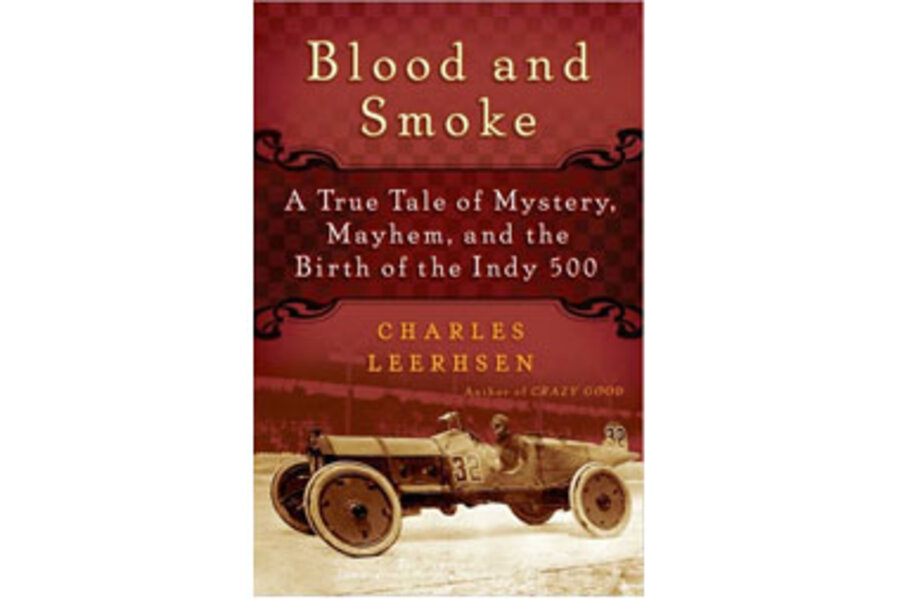Racecar driving: even 100 years ago, excitement outweighed the danger
Loading...
Speed is a crucial part of many sports, but car racing may be the only one where it's the both the key to victory and a serious threat to survival.
Fans learned that once again last weekend, when two-time Indy 500 winner Dan Wheldon died during a mammoth crash at a race track in Las Vegas.
The risk of death was much higher during the early years of auto racing, when cars traveled at high speeds but didn't have anything near the safety features they do now. Even the fans in the stands were in jeopardy.
But the excitement outweighed the danger during the wild early days of the sport, as author Charles Leerhsen reveals in his 2011 book Blood and Smoke: A True Tale of Mystery, Mayhem and the Birth of the Indy 500.
This week, I asked Leerhsen about the evolution of auto racing, the dangers it posed and the thrills sought by the drivers.
Q: How soon did auto racing begin after the invention of the car?
A: The joke goes that the first auto race started as soon as the second car was made. It began as soon as there was something to compete with: "Mine is better than yours."
Q: Were the races very impressive in the beginning?
A: There was a race in Wisconsin, I think in the 1850s, when they used steam-powered buckboards [a kind of wagon]. They raced at 6 miles an hour, and it was a 200-mile race.
It was totally lacking in spectacle. It was such a success that the second race didn't happen for 17 years.
Q: Auto racing picked up in the early 20th century as cars became more common. Did manufacturers make speed part of their sales pitch?
A: There was this idea of competing, and competition was part of marketing the cars. But it wasn't like "switch brands and buy my brand." It was like "sell your horse and buy a car" as people were grappling with this idea of what is a car and how will it work in their life.
The cars in the races were supposed to be the same cars you could buy in the showroom. You'd watch for the cars that went fastest and didn't break down.
Q: How did auto racing as we know it begin?
A: There were more than 1,000 car manufacturers in the first decade of the 20th century. They wanted to get this brand-recognition thing going, so there would be these traveling shows at county fairs, kind of like vaudeville on wheels. They'd come to your town and stage a race, and it might be fixed like wrestling.
That didn't mean these races weren't dangerous. There were guys going around half-mile horse tracks with tight turns, trying to go fast.
Bad things would happen because they didn't have the speed thing down. They'd go 100 miles an hour on a straightaway, but it was very hard to steer the cars and to stop them. The brakes were very primitive.
If you look at a picture, you can see how these guys were exposed. They're high off the ground, with no hard helmet, and there's no roll bar or roof. The wheel base was relatively narrow, so the cars turned over a lot.
The term "turned turtle" was the expression they used. And when that happened, the first thing to hit the ground was the driver's head.
Q: What did people think about the risk of death?
A: In a long race, you almost expected someone to die.
During the the first Indy 500 in 1911, you could bet on a guy to win and you could also bet on any driver to live or die. There was only one death, and that was considered a huge humanitarian success.
Maybe even a better example was in 1909, when the Indianapolis speedway opened. People didn't want this dangerous thing in their town, but the promoters said it's safe, it'll be fine and great.
In the first three days of racing, five people died, and that includes drivers, mechanics, and spectators, people who were in the stands when cars went flying into them.
Q: What was in it for the race-car drivers, who didn't make much in terms of money?
A: There were three feeder pools. One was the rich Ivy League kids who were going to go off to a career in banking or their father's stock brokerage. They wanted to have some thrills before they did that and sow their wild oats.
Another group was the farm kids who weren't going to escape that life. This was a glamorous way to get their names in the paper. And then there were the foreigners who came here.
Auto race drivers were stylish. They loved their uniforms and leather helmets, and some of them had big large scarves that would trail off in the wind behind them. They were kind of wild men, and the newspapers speculated whether they were another breed of human.
Q: It worked out well for some of them, didn't it?
A: They were quite famous. They got the girl, and they got the fame.
Randy Dotinga is a regular contributor to the Monitor’s books section.





